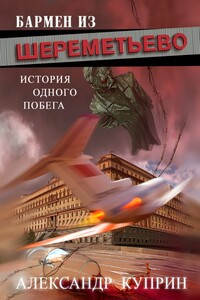“You, too, sir,” the lieutenant said with a smile and returned to his seat.
Wilson nodded. He was right. Air Ops was the place to be at night, especially a night like this. Dozens of decisions were being made that affected the human drama of operating high performance aircraft in the close vicinity of the ship. And, for the most part, that drama centered around fuel states. Airplanes could recover aboard a carrier only if they had a certain amount of fuel. The typical requirement was half of a full load; that amount would not overstress a 17-ton Hornet airframe as it smashed into the deck at the rate of 700 feet-per-minute. During the descent, the plane looked as if it were suspended a few feet above the flight deck and then dropped. At the moment of the “drop,” the plane’s tailhook grabbed one of the steel cables stretched across the deck and wrestled the jet to a halt, slowing it from over 140 miles per hour to zero within the distance of little more than a football field.
The hook sometimes skipped over the wires, or the pilot came across the ramp too high and landed long. Either circumstance resulted in a “bolter.” Therefore, landing called for full power on each touchdown to ensure the aircraft could get airborne if necessary. Until it did, its hook clawed at the nonskid surface and kicked up a dazzling spray of sparks. The jet then zoomed off the end of the angled deck and struggled back into the air for a downwind turn and another approach.
Sometimes the pilot would get a “wave-off” signal from the LSO due to a poor approach or due to the deck status. Pilots liked recovering with “max-trap” fuel in these conditions. More fuel meant more options, more chances to get aboard. All aircrew sweated fuel when operating around the ship, but “blue water ops” at night, especially with a pitching deck, put everyone on edge. Sometimes pilots cheated, bringing an extra 100–200 extra pounds of fuel aboard; that extra fuel equaled one or two more minutes airborne if they needed it for another pass, to rendezvous on the tanker, or to make the divert field, even if they had to fly on fumes. That was certainly better than flaming out and ejecting 10 miles short. The fuel gauge was, indeed, the most important instrument in the cockpit at times like these.
More pilots dropped in next to Wilson in the peanut gallery: squadron department heads and COs and XOs from the other squadrons were all there to act as subject matter experts, if the need arose. He exchanged greetings or nods with most of those who caught his eye, but they were all there, like Wilson, to assess the situation facing their pilots that evening. CDR Randy “Big Unit” Johnson, the Buccaneer’s Executive Officer, sat down next to Wilson. Johnson shared the same name as the flame-throwing major league hurler, stood at six-foot-four, and had a bone-crushing handshake he had developed from regular workouts in the foc’sle weight room. He possessed the good looks of a movie star — with his thick, dark hair, brown eyes, square jaw and cleft chin — he was one of the nicest guys in the wing and a solid carrier pilot.
“Flip, ready for another fun-filled night of stupid human tricks?”
“Yes, sir!” Wilson responded, and then added, “How’s Betty doing? Heard about her long bolter.”
“She saw the elephant on that one. She said she had a ball, but she could sense the deck pitch down — it just slid out from under her. She knew she was going to bolter and just held what she had, but the deck seemed to fall further and further away. She saw nothing but water and lit the cans just as she touched down. My understanding is that she was pretty far up there.”
“Yes, sir, my gunner saw it from the de-arming hole. His eyes were big.”
“Yeah,” Johnson chuckled. “I’ll bet he could see Betty’s eyes a mile away when she was abeam on downwind! After she trapped, she came into the ready room in her gear muttering ‘Holy shit! Ho-ly shit!’”
Wilson laughed, having been there before.
Johnson continued. “You know, it always amazes me… Here we are in the middle of friggin’ nowhere, flying in these varsity conditions, which is pretty dangerous when you think about it. Yet, we go to the ready room, watch the PLAT and




